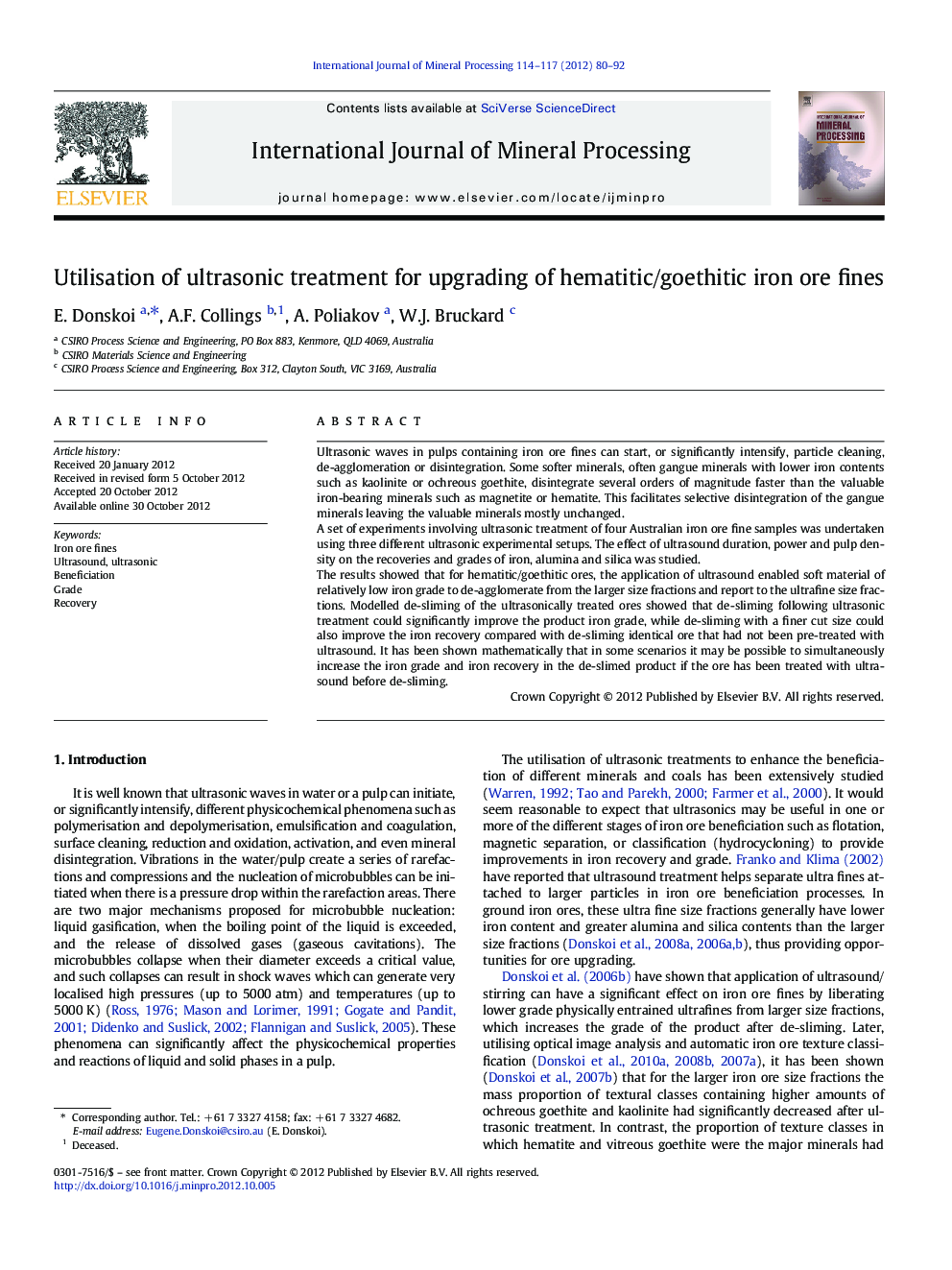| Article ID | Journal | Published Year | Pages | File Type |
|---|---|---|---|---|
| 214130 | International Journal of Mineral Processing | 2012 | 13 Pages |
Ultrasonic waves in pulps containing iron ore fines can start, or significantly intensify, particle cleaning, de-agglomeration or disintegration. Some softer minerals, often gangue minerals with lower iron contents such as kaolinite or ochreous goethite, disintegrate several orders of magnitude faster than the valuable iron-bearing minerals such as magnetite or hematite. This facilitates selective disintegration of the gangue minerals leaving the valuable minerals mostly unchanged.A set of experiments involving ultrasonic treatment of four Australian iron ore fine samples was undertaken using three different ultrasonic experimental setups. The effect of ultrasound duration, power and pulp density on the recoveries and grades of iron, alumina and silica was studied.The results showed that for hematitic/goethitic ores, the application of ultrasound enabled soft material of relatively low iron grade to de-agglomerate from the larger size fractions and report to the ultrafine size fractions. Modelled de-sliming of the ultrasonically treated ores showed that de-sliming following ultrasonic treatment could significantly improve the product iron grade, while de-sliming with a finer cut size could also improve the iron recovery compared with de-sliming identical ore that had not been pre-treated with ultrasound. It has been shown mathematically that in some scenarios it may be possible to simultaneously increase the iron grade and iron recovery in the de-slimed product if the ore has been treated with ultrasound before de-sliming.
► Ultrasound treatment de-agglomerates soft minerals in iron ore fines and reports them to the ultrafine size fractions. ► De-sliming following ultrasonic treatment can significantly improve the product iron grade. ► Ultrasonic treatment can simultaneously increase the iron grade and iron recovery in the de-slimed product.
